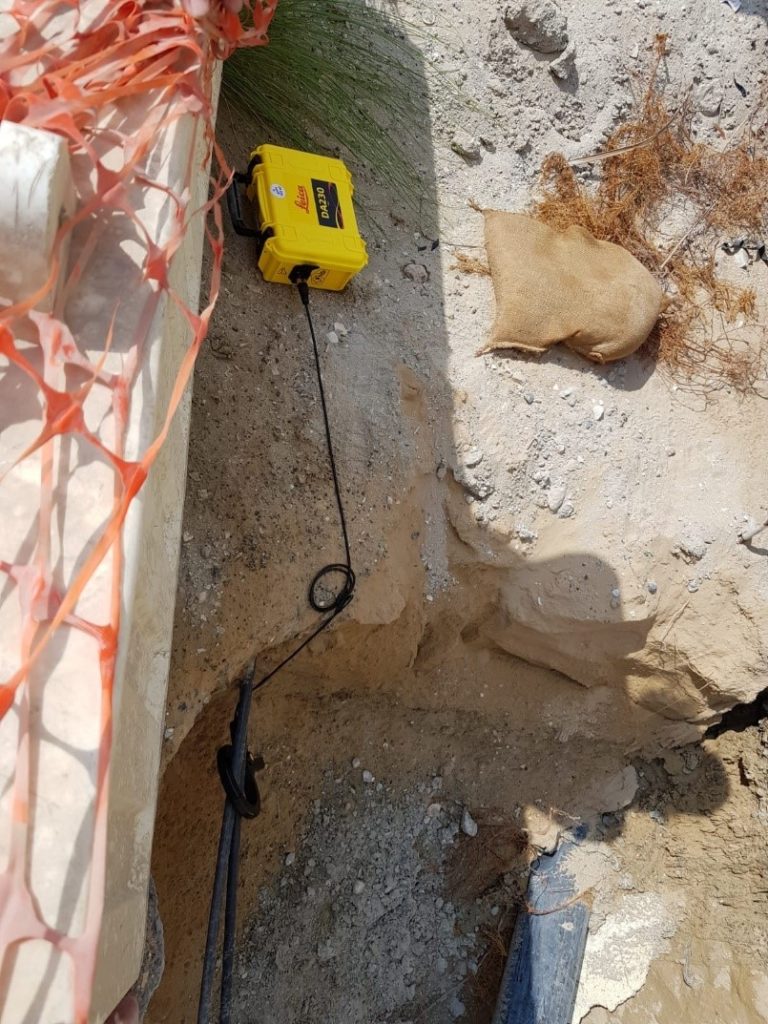Many construction and surveying jobs have a need for detection and location of underground utilities – whether the task is simply to identify and avoid utilities in an excavation zone or produce maps for further works and design. Even though the same technology applies to more applications for detecting utilities, different equipment and accessories can assist a trained person to give the best quality information to the user and their skill set. (Read our blog on “4 key tools for utility detection” to find out more)
Have access to the equipment needed
More than 70 per cent of utility strikes occur in the footpaths and highways, and the majority of these are LV electrical and telecoms cables. These statistics show during pre-excavation cables are often not identified by the excavation team. There can be several reasons why these strikes happen, however, having access to the equipment needed to locate these utilities that pose a risk to the workforce is essential. For avoidance of strikes in an identified dig zone, the most common tool is a cable avoidance tool.

Get trained on how to use a detection portfolio
Having specifications for a job should prepare the workers for what tools will be required, however, almost 90 per cent of strikes occur on planned works, showing that even having plans still does not eradicate damages to utilities. This could be due to outdated legacy maps or to incomplete equipment not being used with its accessories.
Hence, it is extremely important that whoever is working with a detection or locating instrument for underground utilities is trained on how to best use equipment and which device is most appropriate for each situation. For this reason, Leica Geosystems created the Leica Geosystems Detection Campus where you can get trained on the Leica Detection Portfolio.
Have a site plan
Site plan information is only correct if it is recent – so if it is weeks or months after a site plan was issued there is potential for more utilities to have been buried in the period leading up to the works. Therefore, scanning the site immediately before excavation is critical to prevent any strikes.

Have a full kit
Having a full kit for utility detection is essential. For example, using a cable avoidance tool in an excavation site would only locate passive signals, however, a transmitter adds the ability to apply a signal through direct connection or induction to locate signals that may not have been located in the passive search. Then, the additional use of accessories, such as signal clamps and tracing rods or sondes allow workers to overcome the majority of obstacles that could prevent the utility location. The signal clamps allow signals to be applied safely around a cable that is visible and potentially running through the site. The sonde and trace rods allow for effective location of non-conductive utilities, such as drainage or conduits, used for routing fibre optic cables.
Having the accessories at hand helps workers to be ready for any eventuality on site that might not have been documented in the plans, such as new scarring or utilities not marked on the maps provided.
In addition, to detect and avoid the plastic and non-metallic pipes or confirming excavation areas are clear of utilities, you should have at hand a GPR, like the Leica DSX. With this utility detection solution you ahve a more efficient, robust and easy-to-use GPR system to contractors and users by detecting utilities on site and easily checking data quality in real time. When the Leica DSX is used in conjunction with Leica Geosystems MC1 machine control software, the chances of utility damage are reduced.
Get the equipment to pinpoint utilities and keep any excavation work safe.














